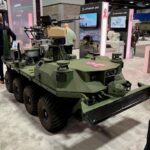
The Coast Guard is in “high level conversations” about the investments that could be made in the service to expand its presence in the Indo-Pacific region in terms of people and assets like ships, Coast Guard Commandant Adm. Linda Fagan said on Tuesday. Fagan said that these conversations are occurring “across a number of different fronts” and are “in addition to” current budgets in terms of “what’s in the art of the possible.” An expanded presence in the Indo-Pacific could…

 By
By 











